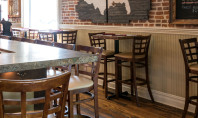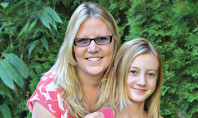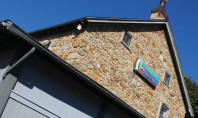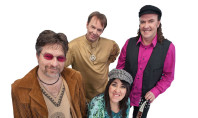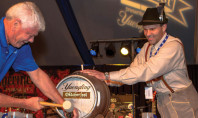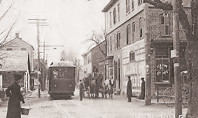The Dutch Art of Pow-Wow Medicine

By Kathryn Finegan Clark
The Pennsylvania Dutch settlers called it Hexenkopf – “witch’s head,” and spoke of strange lights, wild shrieks and evil spirits. Locals know it as Misery Mountain or simply the haunted hill.
In full sun, the hill is steeped in heavily forested hillsides, rolling green fields, and a scattering of 19th century stone farmhouses and barns.
By night, some believe the supernatural takes over and witches dance in the dark of the moon. Strange tales, laced with disaster, death and disappearance, have unfolded over the years. Stories of a mysterious glow, screaming spirits and ghostly riders, have been passed down.
Hexenkopf lies just west of Raubsville, where a church steeple hovers over a quiet, quaint landscape of houses nestled along the Delaware River south of Easton. It’s nearly impossible to believe the village was once a center of magic and mystery and witchcraft – until you hear from Ned D. Heindel.
He and his wife, Linda, own about 30 acres, or two-thirds, of the hill off Hexenkopf Road. Their property contains the rock that has intrigued generations of thrill-seekers.
Local folks believed the Hexenkopf Rock held all the sickness and other miseries transferred to it by generations of pow-wow doctors. For two centuries, Raubsville was a hotbed of pow-wow doctors, or brauchers, as the Pennsylvania German immigrants called them. They treated illnesses and broke curses and spells cast by angry people seeking revenge against neighbors – or family.
The Heindels are both PhDs, sane and solid citizens. He chairs the chemistry department at Lehigh University and she was a dean at Moravian College. Both are local historians. “We are not believers,” Linda said, “but we’ve heard plenty of stories from people – stories that are credible to them.”
Hexenkopf bears that name because it resembles the stereotyped profile of a witch’s head. Heindel, who has lived next to the rock for nearly 50 years, claims it is merely an outcropping of ancient gneiss, carved by weather into the spooky silhouette. It may at one time have contained bits of mica that would have shone in the dark, according to geologists. It is visible only when trees are bare.
The Heindels knew nothing of the Hexenkopf legend when they moved to Williams Township but after they heard local folk tales spun by neighbors, Heindel, intrigued, began to collect stories and ancient cure books and charms used by the pow-wow doctors who made the village and the rock famous.
His book, “Hexenkopf History, Healing & Hexerei,” published in 1976 by the Northampton County Historical & Genealogical Society, is now in its second edition. He continues to collect information for a third.
Heindel said the brauchers were basically faith healers who drew direction from Biblical verses, ancient texts and medieval manuscripts. They used herbal remedies and charms, words written on slips of paper often held in fabric braucher bags. They cured human and animal ailments, often using charmed circles they drew on the ground around the patients and foul-smelling ointments to fend off evil and disease. They resolved personal problems, pronounced incantations and performed laying on of hands.
One of their favorite practices was transference, the drawing of pain or sickness or evil out of a person and putting it into a tree or a rock.
They had come from the Palatinate-Rhineland region of Germany and simply brought their deep-seated superstitions and beliefs in witchcraft and the black arts with them. They believed the devil caused diseases.
The major practitioners in Raubsville were members of the Seiler and Wilhelm families. Johann Peter Seiler, one of the first pow-wow doctors, settled near Raubsville before 1750. He treated both settlers and Indians and his fame spread from Massachusetts to Georgia. He passed his knowledge down through generations of the Seiler/Saylor/Sailer line.
By night, some believe the supernatural takes over and witches dance in the dark of the moon.
Jacob Wilhelm, who died in 1821, was a famous braucher and left a detailed cure book used by a succession of brauchers who added their own notes.
His grandson, John Henry Wilhelm, benefited from his knowledge of braucherie as well as that of Peter Seiler, a bachelor and the last of his line, who mentored the young John Henry, according to Heindel. Wilhelm sisters, Sabina and Cecilia, born in the 1820s, are listed in Heindel’s book as known brauchers.
Both families were highly respected and their reputations were widespread, drawing streams of visitors to their doorsteps. No payment was exacted but it was common knowledge patients could leave a dollar bill in the family Bible.
The brauchers kept pow-wow books listing herbal treatments and healing charms, and often borrowed remedies from each other.
“These were the good guys,” Heindel said. “They practiced ‘white magic.’ They didn’t make people sick – and sometimes they cured them.” He said some illnesses simply ran their natural courses and ended happily. Some of the herbal treatments did work and were actually more effective than some of the treatments practiced by “real” doctors, such as bleeding that weakened and actually killed some patients. Modern medicine was still in its infancy in the 19th century.
Heindel, a past president of the American Chemical Society and a consultant to pharmaceutical companies, said a number of modern drugs are based on the herbs used by brauchers.
The last of the Wilhelm doctors was Arthur, who actually held a medical degree, and blended orthodox medical treatments, homeopathy, aroma therapy and pow-wowing, because the people believed in that. Heindel said the physician’s death in 1950 brought an end to two centuries of pow-wowing in Raubsville, although it is still practiced in other areas the Pennsylvania Dutch settled.
But then, Linda Heindel said two groups appear at her door every spring, seeking permission to climb Hexenkopf Hill, the Heindels’ private property. The Heindels do not encourage trespassers, but Linda said, “These people are quiet, definitely different, and they go up there, have their little ceremony and they pick up trash along the way.”
The question is – do they dance?

